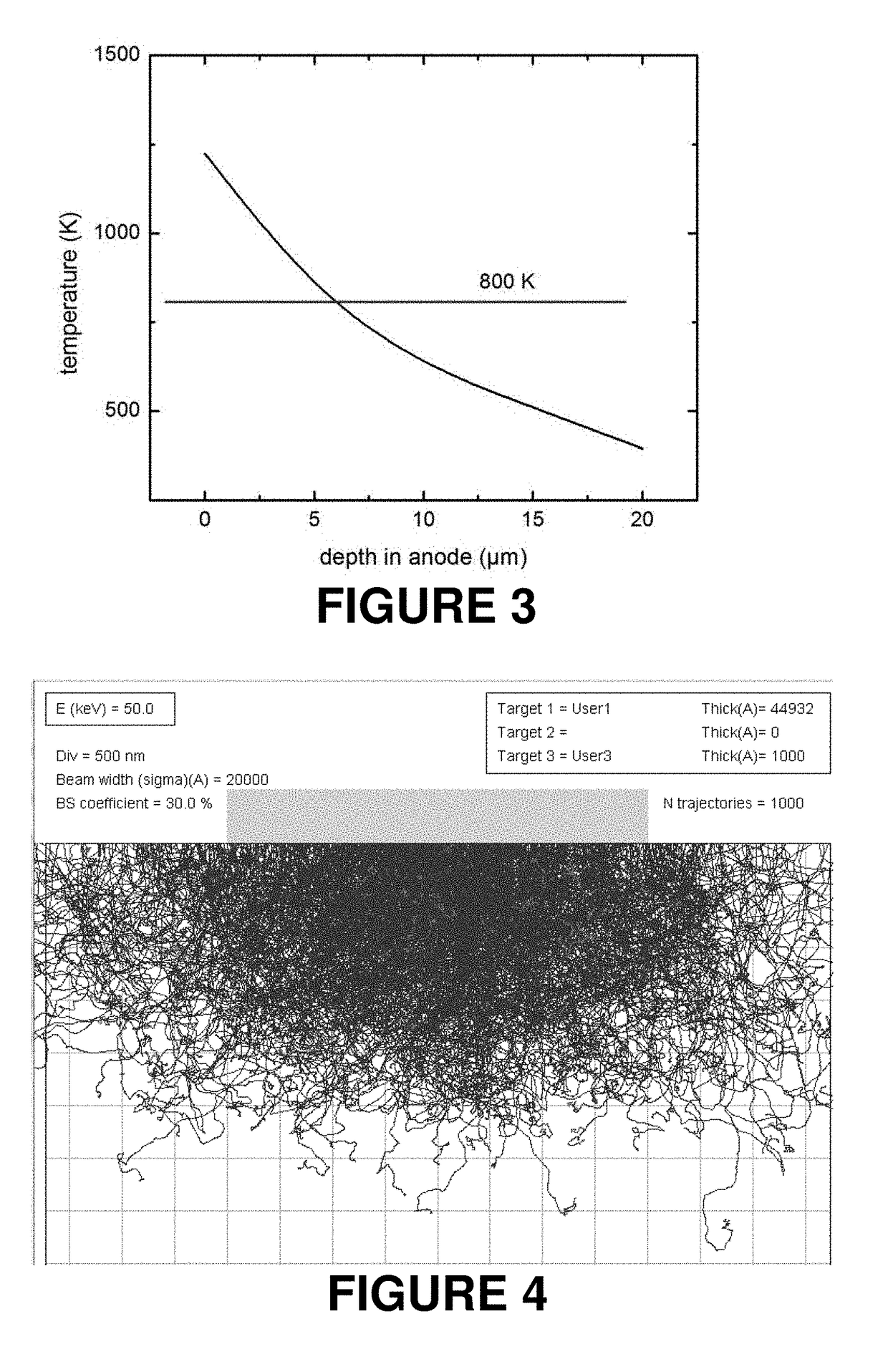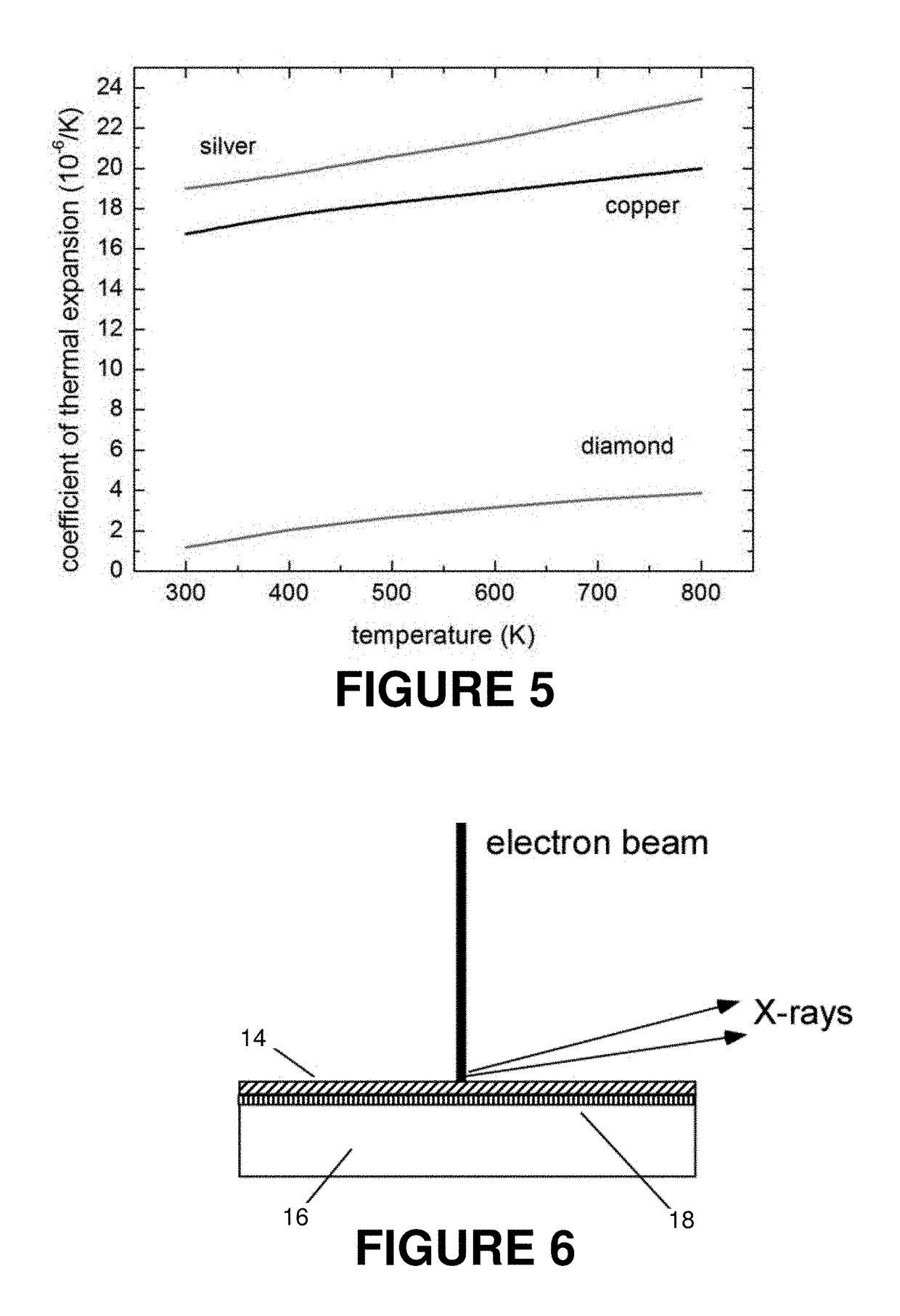Analytical x-ray tube with high thermal performance
a technology of x-ray tubes and thermal performance, applied in the field of x-ray tubes, can solve the problems of limited maximum brightness, thermal limitation of tubes, and relatively inefficient electron impact excitation of x-rays, and achieve the effects of improving thermal properties, dissipating heat from the anode, and high brightness
- Summary
- Abstract
- Description
- Claims
- Application Information
AI Technical Summary
Benefits of technology
Problems solved by technology
Method used
Image
Examples
Embodiment Construction
[0020]Although diamond substrates have been used in the past as a means for dissipating heat from a target material located thereupon, a number of practical difficulties still exist in X-ray tubes that use such an arrangement. FIG. 2 shows a plot of the thermal conductivity of diamond and metals commonly used in analytical X-ray tubes relative to temperature. As shown, diamond has a thermal conductivity that is significantly higher than copper or silver at room temperature, typically by a factor of three or four for synthetic (chemical vapor deposited) diamond. This makes diamond an attractive choice for a substrate in certain applications, but the thermal conductivity advantage that it provides is only present at relatively lower temperatures. At higher temperatures, above about 800 K, the thermal conductivity of both copper and silver exceeds that of diamond.
[0021]In practice, analytical X-ray tubes are frequently operated at temperatures approaching their melting point so as to m...
PUM
| Property | Measurement | Unit |
|---|---|---|
| operating temperature | aaaaa | aaaaa |
| operating temperature | aaaaa | aaaaa |
| depth | aaaaa | aaaaa |
Abstract
Description
Claims
Application Information
 Login to View More
Login to View More - R&D
- Intellectual Property
- Life Sciences
- Materials
- Tech Scout
- Unparalleled Data Quality
- Higher Quality Content
- 60% Fewer Hallucinations
Browse by: Latest US Patents, China's latest patents, Technical Efficacy Thesaurus, Application Domain, Technology Topic, Popular Technical Reports.
© 2025 PatSnap. All rights reserved.Legal|Privacy policy|Modern Slavery Act Transparency Statement|Sitemap|About US| Contact US: help@patsnap.com



